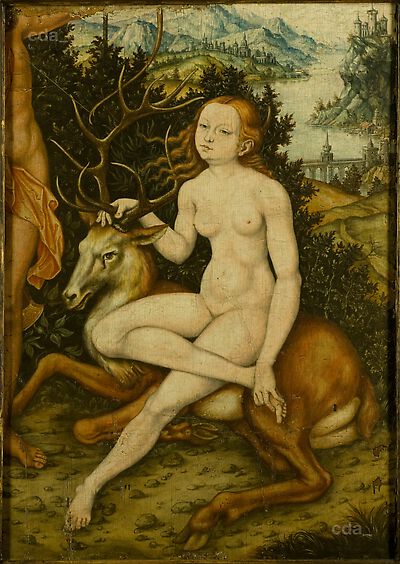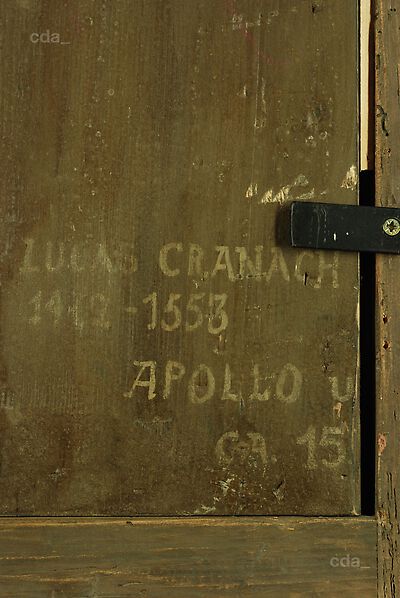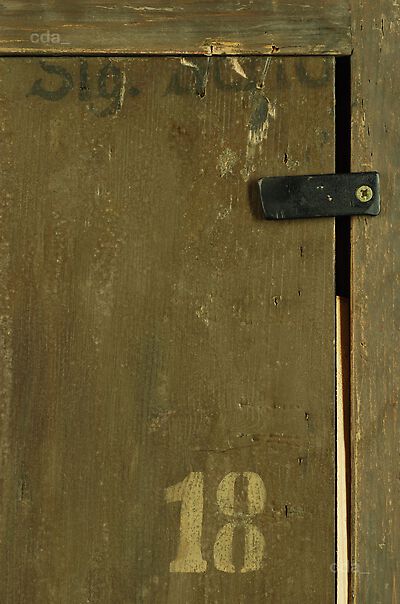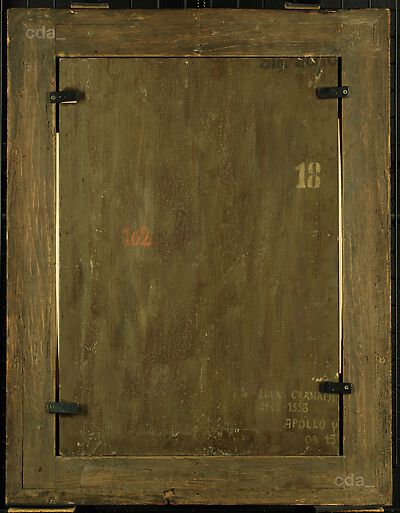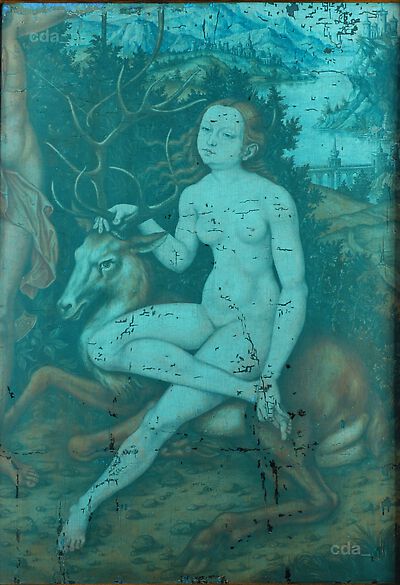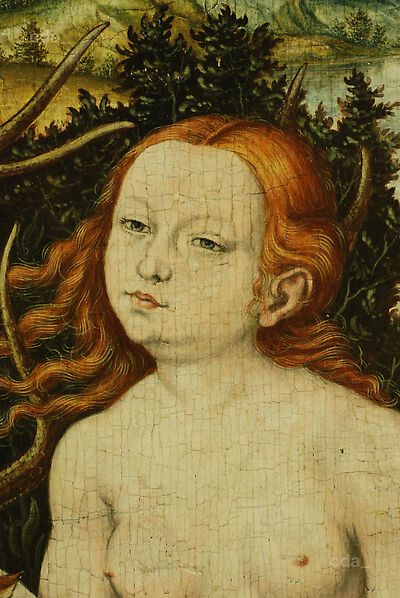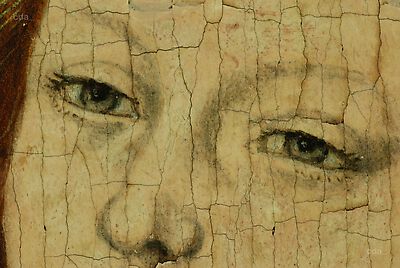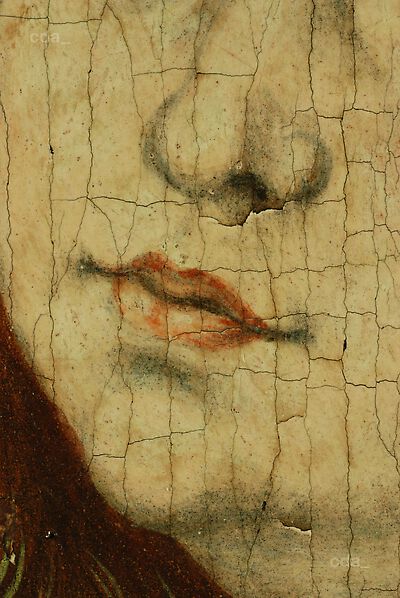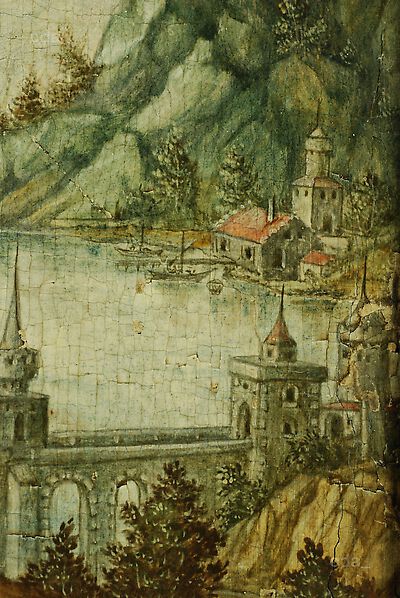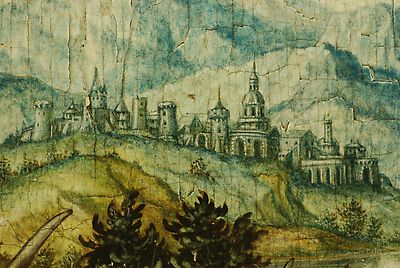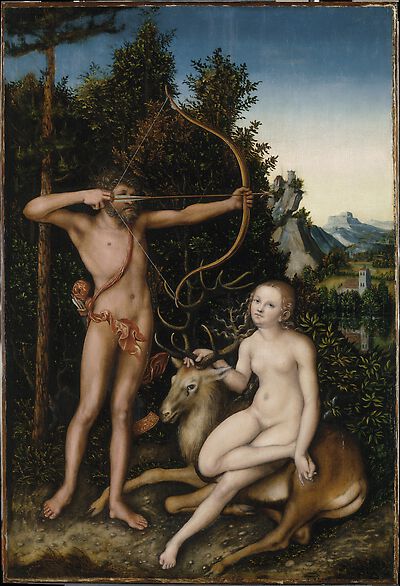- Attribution
- Copy after Lucas Cranach the Elder
Attribution
| Copy after Lucas Cranach the Elder | [Heydenreich,examination report 2009] |
- Production date
- 1950 - 1999
Production date
| 1950 - 1999 | "Second half 20th century" [Heydenreich, examination report 2009] |
- Dimensions
- Dimensions of support: 73.3 x 51.3 x 0.7 cm
Dimensions
Dimensions of support: 73.3 x 51.3 x 0.7 cm
[Heydenreich, examination report 2009]
- Signature / Dating
None
- Inscriptions and Labels
There are numerous inscriptions on the reverse of the panel in light grey, red and black paint: '18', '102', …
Inscriptions and Labels
Stamps, Seals, Labels:
There are numerous inscriptions on the reverse of the panel in light grey, red and black paint: '18', '102', 'LUCAS CRANACH 1472-1553', 'APOLLO', '15'; 'Slg. Schu.'. The text at the right edge is incomplete: 'LUCAS CRANACH...' as is the text in the top right corner 'Slg. Schu.'.
[Heydenreich, examination report 2009]
- Owner
- Private Collection
- Repository
- Private Collection
- CDA ID
- PRIVATE_NONE-P017
- FR (1978) Nr.
- FR-none
- Persistent Link
- https://lucascranach.org/en/PRIVATE_NONE-P017/
